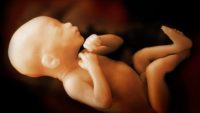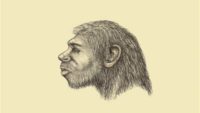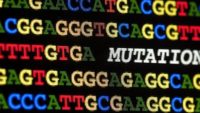The shrimp eye has an intricately structured reflective layer to focus light. Engineers would like to be able to copy the structure. …read more Source: creation.com
By Avery Foley At 11 weeks, the unborn baby is only about 1.6 inches and is already moving and kicking, demonstrating amazing and rapid development in the womb. …read more Source: AIG Daily
By Stacia McKeever By nine weeks of life (11 weeks gestational age), a baby has developed arms and legs (with individual fingers and toes), which he or she can begin to move. …read more Source: AIG Daily
By Tom Hennigan Beavers aren’t just great dam builders. They’re specially equipped to work in the water as God’s wetland engineers. …read more Source: AIG Daily
By Frost Smith At eight weeks gestation, the baby is growing more noticeably and has developed a sense of touch–a sign of intricate design and the blessing of a new life. …read more Source: AIG Daily
As evolutionists ponder the propensity of chimps to kill other chimps, they are not rushing to the conclusion that this explains why humans kill humans. We hope you enjoy this sneak peek from the soon-to-be-released Creation magazine …read more Source: creation.com
By Patricia Engler The human embryo begins to show intricate features, including a regular heart rhythm on day 28 of development that points to the careful design of a Creator. …read more Source: AIG Daily
Flying reptiles once flew through ancient skies. Most of our knowledge of these fascinating animals, called pterosaurs, comes from their fossils. But how well-suited were they for flight? Details from one newly analyzed specimen upgrade our understanding of flight engineering in pterosaurs. Publishing in the Proceedings of the National Academy of Sciences, four scientists affiliated with institutions from four different co… More… …read more Source: icr.org
By Avery Foley In early 2019, many Americans watched in horror as legislators proposed what were labeled extreme abortion bills. …read more Source: AIG Daily
How do we account for so many species of beetles if Noah’s Flood was only 4,500 years ago? …read more Source: creation.com
By Liz Abrams At less than 0.5 cm long, the tiny baby is growing rapidly and has three “layers,” which are the groundwork for further development. …read more Source: AIG Daily
By Heather Brinson Bruce There’s more to this funny-looking fowl than meets the eye. …read more Source: AIG Daily
By Ken Ham Is evolution a game of “slow and steady,” or is it more of a rapid process, happening “all around us all the time”? Well, that entirely depends on how you define evolution! According to a new paper, evolutionary changes can be very rapid, “seen within a lifetime.” But are the researchers actually observing evolution? Here’s the example of so-called “rapid evolutionary interplay” given at the beginning of the popular summary in the paper: In response to targeting by trophy hunters, wild populations of bighorn sheep are now growing 10 per cent smaller horns than they did less [More]
“If you haven’t read part 1 you can do so here.” Admin Raw tRNAs are not enough; they need dozens of biochemical to function. …read more Source: creation.com
Their formation is a ‘chicken and egg’ problem for evolution. …read more Source: creation.com
Contrary to media hype, anole lizards on the Bahamas are not evolving …read more Source: creation.com
Animal migrations occur all over the earth among many types of creatures, with some winged creatures (birds and insects) making the most extreme and lengthy ones. Among insects, the globe skimmer dragonfly (Pantala flavescens) is exceptional—being able to fly up to 3,730 miles across the open ocean. Scientists are finally beginning to unravel the required specificity behind the anatomical, behavioral, and metabolic complexity that … More… …read more Source: icr.org
Viking ‘Dragons of the Sea’ defy evolutionary theory …read more Source: creation.com
By Frost Smith Just three weeks after fertilization, the tiny unborn baby’s brain, spinal cord, and other organs begin to form, demonstrating early complex development. …read more Source: AIG Daily
It’s the hardest substance in the human body. But be warned: If you’re slack with your dental hygiene, fixing your tooth enamel ain’t easy. …read more Source: creation.com
By Ken Ham Australopithecus sediba—did it walk like a human but climb like an ape? According to a recent study, new lower back fossils of this so-called “human ancestor” supposedly “settles a decades old debate proving early hominins used their upper limbs to climb like apes and their lower limbs to walk like humans.” Now, we’ve said for years that A. sediba was just an ape. But does this new study show it was indeed a “missing link,” as the article claims? Paleontologist Dr. Gabriela Haynes, one of the members of our research team, shares this about A. sebiba and [More]
‘Evolution in action’ turns out to be nothing of the sort. ‘Bacteria evolve resistance to antibiotics’, ‘Insects evolve resistance to pesticides’, ‘Organisms evolve tolerance to pollutants’—these headlines lead many to think that the molecules-to-man evolutionary process is happening before our very eyes. …read more Source: creation.com
By Dr. David Menton Look at those luscious pancakes! Can’t you just taste them? You can—because of God’s intricate design for your senses. …read more Source: AIG Daily
By Harry F. Sanders, III How we know human life begins at conception, as the Bible affirms, and the cultural consequences of ignoring the facts …read more Source: AIG Daily
After the Flood, numerous animals adapted to special environments. Let’s look at how some special animals, the sandcat, fennec fox and mulgara adapted to the desert heat! …read more Source: creation.com
By Harry F. Sanders, III How mutations could be removed from a genome through inbreeding, though the original integrity could not be restored in reality or in an evolutionary paradigm. …read more Source: AIG Daily





































